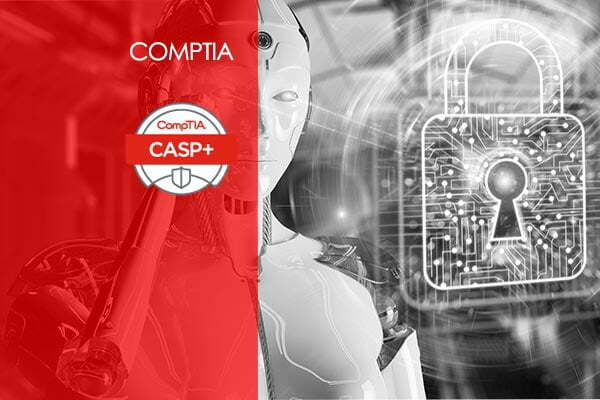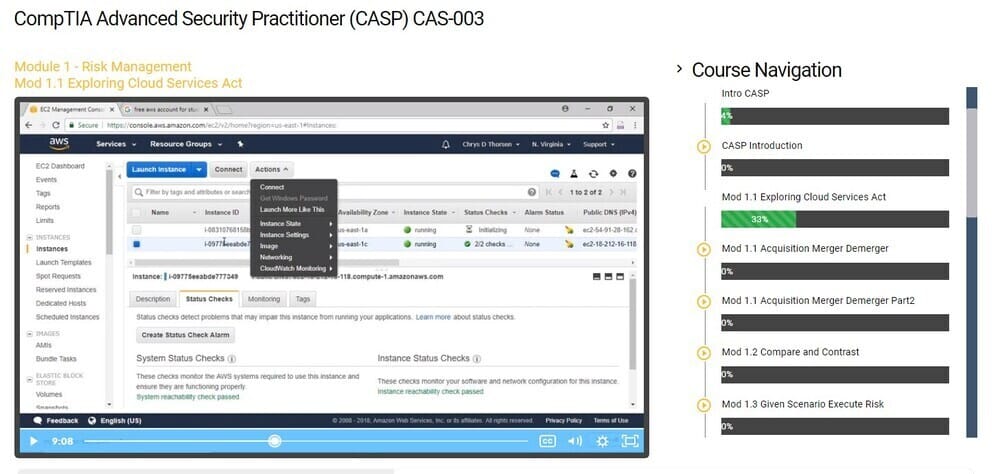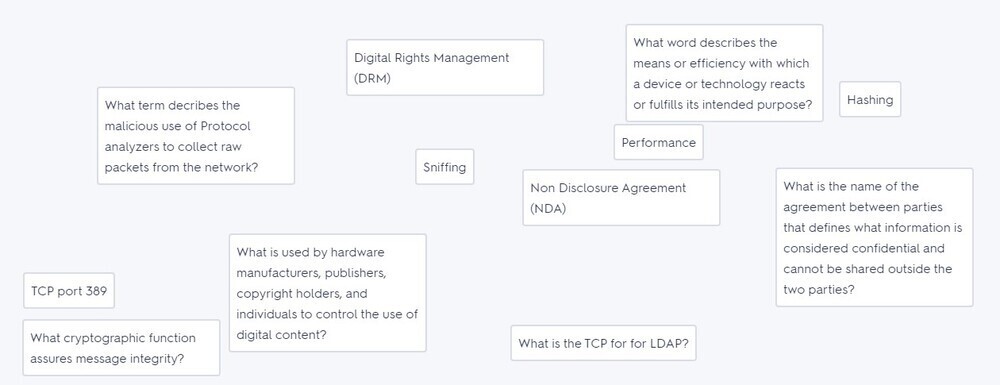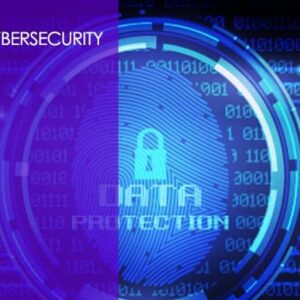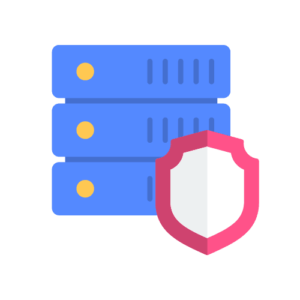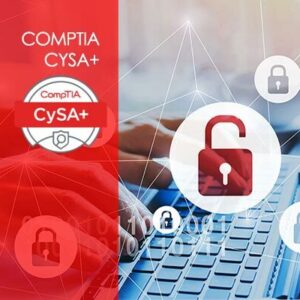Are you ready to take your cybersecurity career to new heights? Look no further than the dynamic and exhilarating world of the CompTIA CASP+ certification! This extraordinary course goes beyond the ordinary, equipping you with the skills and knowledge to become a true cybersecurity champion.
Imagine being the go-to expert who can create ingenious, secure solutions in the most intricate enterprise environments. With CASP+, you’ll unlock your technical prowess to design and engineer cutting-edge defenses that align perfectly with business objectives. No more compromising between security and productivity—CAS+ ensures you can have it all!
What sets CASP+ apart from the rest is its unrivaled scope. Not only will you master the art of security architecture, but you’ll also delve deep into the realm of engineering. This unique combination empowers you to construct robust security frameworks that safeguard organizations against relentless cyber threats.
Picture yourself as the gatekeeper of cyber readiness, evaluating an enterprise’s vulnerabilities with a discerning eye and implementing flawless incident response tactics. CASP+ arms you with the knowledge and skills to anticipate and mitigate risks effectively, making you an invaluable asset to any organization. Rest assured, you’ll be prepared to face any attack head-on, ensuring your business stays one step ahead of the game.
Now, let’s talk about the exam. The CASP+ certification exam is designed to be both challenging and rewarding. It puts your technical prowess to the test, gauging your ability to analyze complex scenarios and make critical decisions. You’ll demonstrate your expertise across various security disciplines, proving your mettle as a seasoned professional.
But here’s the best part—once you conquer the CASP+ exam, a world of opportunities opens up to you. Employers worldwide recognize CASP+ as a symbol of excellence, paving the way for exciting career advancements and higher earning potential. You’ll be in high demand, sought after by organizations eager to tap into your unmatched skills and knowledge.
So, are you ready to take the leap and become a cybersecurity trailblazer? CASP+ is your ticket to success in today’s digital world. Embrace the exhilarating challenges, reap the rewards, and position yourself at the forefront of the cybersecurity revolution. Your future starts here!
CASP + Exam Information
Your technical cybersecurity abilities, such as security architecture and senior engineering in legacy, cloud, and hybrid systems, will be developed by earning the high-level professional certification known as CASP+. Along with these skills, you’ll learn how to assess the cybersecurity readiness of a company through governance, risk management, and compliance. Additionally, having the capacity to direct teams in the implementation of corporate security solutions. The following will be possible with CASP+:
- Designing, constructing, integrating, and executing secure frameworks across complicated situations to enable a reliable business.
- Utilize monitoring, detection, incident response, and automation to be ahead of the curve for ongoing security operations in an enterprise setting.
- Enhance your cloud, on-premises, endpoint, and mobile infrastructure security measures by evaluating cryptographic processes and technologies.
- Think about the extensive ramifications of enterprise-level governance, risk, and compliance regulations.
CASP+ gives credibility and assurance that regulators and the government can rely on. It was developed in accordance with ISO 17024 standards and approved by the US DoD to meet Directive 8140/8570.01-M requirements. Over 2.3 million people have taken ANSI-accredited CompTIA tests since 2011 — this is proof of their usefulness!
You will learn about the following subjects in this CompTIA CASP + IT course:
- Blockchain-Cryptocurrency and Mobile device encryption
- Cryptographic Techniques and cybersecurity policies
- Authorization techniques that work with business operations
- Cloud technologies
- Virtualization technologies
- Competency in risk management and advanced threat management
- Secure storage management without business disruptions
- Implement advanced cybersecurity configurations on a business platform
Course Outline:
Module 1– Underlying Security Models
Course Guide
Underlying Security Models Part 1
Underlying Security Models Part 2
Underlying Security Models Part 3
Underlying Security Models Part 4
Underlying Security Models Part 5
Underlying Security Models Part 6
Underlying Security Models Part 7
General Security Part 1
General Security Part 2
Module 2– Selecting Security
Selecting Security Products Part 1
Selecting Security Products Part 2
Selecting Security Products Part 3
Control Selection Process Part 1
Control Selection Process Part 2
Module 3– Cryptography
Cryptography Symmetric and Asymmetric Part 1
Cryptography Symmetric and Asymmetric Part 2
Cryptography Symmetric and Asymmetric Part 3
Cryptography Symmetric and Asymmetric Part 4
Cryptography Message Integrity Controls Part 1
Cryptography Message Integrity Controls Part 2
Cryptography Message Integrity Controls Part 3
Cryptography Digital Signatures Part 1
Cryptography Digital Signatures Part 2
Cryptography PKI and PGP Part 1
Cryptography PKI and PGP Part 2
Cryptography PKI and PGP Part 3
Cryptography PKI and PGP Part 4
Module 4– Storage
Storage Part 1
Storage Part 2
Storage Part 3
Storage Part 4
Module 5– Virtual Computing
Virtual Computing
Cloud Computing Part 1
Cloud Computing Part 2
Cloud Computing Part 3
Cloud Computing Part 4
Cloud Computing Part 5
Module 6– IPv6
IPV6 Part 1
IPV6 Part 2
Module 7– Remote Access Security
Remote Access Security Part 1
Remote Access Security Part 2
Module 8– Domain Name System
Domain Name System Part 1
Domain Name System Part 2
Domain Name System Part 3
Domain Name System Part 4
Domain Name System Part 5
Domain Name System Part 6
Domain Name System Part 7
Domain Name System Part 8
Module 9– Directory Services
Directory Services
Module 10– Firewall and VPN
Firewall and VPN Part 1
Firewall and VPN Part 2
Firewall and VPN Part 3
Firewall and VPN Part 4
Firewall Policy Part 1
Firewall Policy Part 2
Firewall Policy Part 3
Firewall Policy Part 4
Module 11– Security Configuration Management
Security Configuration Management Part 1
Security Configuration Management Part 2
Security Configuration Management Part 3
Module 12– Network Infrastructure Security
Network Infrastructure Security Part 1
Network Infrastructure Security Part 2
Network Infrastructure Security Part 3
Network Infrastructure Security Part 4
Module 13– Secure Web Services
Secure Web Services Part 1
Secure Web Services Part 2
OWASP Top Ten Part 1
OWASP Top Ten Part 2
OWASP Top Ten Part 3
OWASP Top Ten Part 4
OWASP Top Ten Part 5
Module 14– Buffer Overflows
Buffer Overflows Part 1
Buffer Overflows Part 2
Module 15– SQL Injection
SQL Injection Part 1
SQL Injection Part 2
Module 16– Access Control
Access Control Part 1
Access Control Part 2
Module 17– Single Sign-On
Single Sign-On Part 1
Single Sign-On Part 2
Single Sign-On Part 3
Module 18– Risk Assessment
Risk Assessment Part 1
Risk Assessment Part 2
Module 19– Testing and Assessment
Testing and Assessment Part 1
Testing and Assessment Part 2
Testing and Assessment Part 3
Module 20– Common Vulnerability
Common Vulnerability Scoring System Part 1
Common Vulnerability Scoring System Part 2
Common Vulnerability Scoring System Part 3
Common Vulnerability Scoring System Part 4
Module 21– Common Criteria
Common Criteria Part 1
Common Criteria Part 2
Common Criteria Part 3
Common Criteria Part 4
Common Criteria Part 5
Module 22– Personally Identifiable Information
Personally Identifiable Information Part 1
Personally Identifiable Information Part 2
Module 23– Risk Management
Risk Management Part 1
Risk Management Part 2
Risk Management Part 3
Module 24– Frameworks
Frameworks Part 1
Frameworks Part 2
Frameworks Part 3
Frameworks Part 4
Module 25– Interconnecting Systems
Interconnecting Systems Part 1
Interconnecting Systems Part 2
Module 26– Security Services
Security Services Part 1
Security Services Part 2
Security Services Part 3
Security Services Part 4
Module 27– Continuous Monitoring
Continuous Monitoring Part 1
Continuous Monitoring Part 2
Continuous Monitoring Part 3
Continuous Monitoring Part 4
Module 28-Incident Handling
Incident Handling Part 1
Incident Handling Part 2
Incident Handling Part 3
Incident Handling Part 4
Module 29– Forensic & Incident Response
Forensic and Incident Response Part 1
Forensic and Incident Response Part 2
Forensic and Incident Response Part 3
Module 30– Requirements Processing
Requirements Processing Part 1
Requirements Processing Part 2
Requirements Processing Part 3
Module 31– Standards Bodies
Standards Bodies
Module 32– Secure System Life Cycle
Secure System Life Cycle Part 1
Secure System Life Cycle Part 2
Secure System Life Cycle Part 3
Module 33– Email
Email
Module 34– Mobile and BYOD
Mobile and BYOD Part 1
Mobile and BYOD Part 2
Module 35– Voiceover IP
Voice over IP
Module 36– Physical Facilities Assessment Process
Physical Facilities Assessment Process Part 1
Physical Facilities Assessment Process Part 2
Module 37– Security Requirements Traceability Matrix
Security Requirements Traceability Matrix
